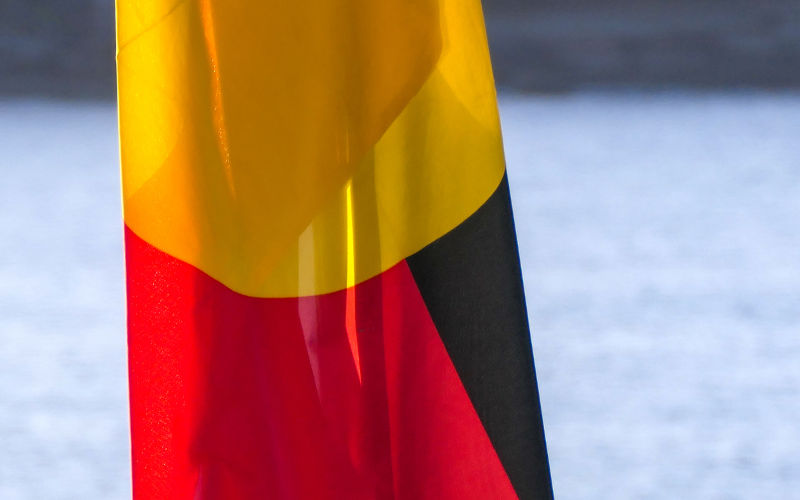Assimilation re-emerges
September 19, 2023
In her recent address to the National Press Club, Jacinta Price resuscitated the seventy years old policy of assimilation constructed by Minister for Territories Paul Hasluck.
What should be done about indigenous Australians has been an abiding question for governments for generations. Echoes of past debates can be heard among the many views in contention about the Voice to Parliament. It all seemed much easier in the early years of federation. Very few people challenged the widespread view that the Aborigines were dying out. Everyday experience and scientific orthodoxy concurred. In his much applauded 1930 history Australia W.K Hancock wrote:
It might still be possible to save a remnant of the race upon well-policed local reserves in Central and Northern Australia. This would cost hard thought and hard cash.—— From time to time (Australian democracy) remembers the primitive people whom it has dispossessed, and sheds over their predestined passing an economical tear.
But by the time Hancock was writing his book it was becoming apparent that in parts of the country the local Aboriginal communities were demonstrably increasing, creating anxiety about what was called the half-caste menace which among other things threatened white Australia particularly in what was seen as the empty north. Administrators in Queensland, the Northern Territory and Western Australia pursued policies with which they sought to breed out the colour. Cecil Cook, Chief Protector in the Northern Territory, believed that half castes should be given an opportunity of evolving, more or less into a white man. His Western Australian colleague A.O. Neville, while addressing a national conference in 1937, asked rhetorically: Are we going to have a population of 1,000,000 blacks in the Commonwealth, or are we going to merge them into our white community and eventually forget that there ever were any Aborigines in Australia.
After the Second World War racial science and sociology had been totally discredited. Decolonisation was redrawing the world and the fledgling United Nations had launched the Universal Declaration of Human Rights. Post war governments returned to what was still seen as the problem of finding the appropriate place for the indigenous minority in white Australia. Assimilation became the central policy platform constructed by Paul Hasluck who was Minister for Territories in the Menzies government from 1951 to 1961. In parliament in June 1950 he declared that we have on our hands a serious but not a frightening problem. The Aborigines were a group within but not of the community. They could be and must be managed. But Australias race relations problem was eased by the big disproportion in numbers between the two races. There was, he declared, no uncertainty about who will swallow whom. In a speech he gave to Melbournes Wesley Church in 1957 he observed that it was probable that the policy of assimilation would mean that after many generations the Aboriginal people will disappear as a separate racial group.
It was this fear of a distinctive minority that was at the heart of the assimilation policy. Hasluck strove to improve the health, education and housing of the First Nations but the overriding ambition was to draw individuals and families into mainstream society where there would be no minorities or special classes. Assimilation would be facilitated by what he assumed was the frailty of traditional society. The more it crumbled the more readily may its fragments be mingled with the rest of the people living in Australia. He feared the consolidation of Aboriginal communities in urban Australia which had a tendency to harden and become less penetrable than the individual. Above all he feared the growth of race consciousness among Aborigines themselves particularly among better-educated Aborigines of the southern cities.
He had a point. By the time he relinquished the territories portfolio in 1961 FCAATSI, the founding national First Nations organisation, had been established. In 1959 delegates adopted a policy of pursuing land rights incorporating ILO Convention 107 of 1957 in their platform and they held a public meeting to discuss the subject of the Aborigines as independent people.
But the central theme of Haslucks assimilation haunts us still. It is apparent in the rhetoric of those supporting the no case in the impending referendum about the Voice to Parliament many of whom may not know much at all about his career. There is the same support for formal equality but earnest disquiet about specific rights for indigenous communities. This is what underpins the much repeated assertion that the Voice is inherently racist because it provides benefits and privileges for First Nations Communities that are not available for any- one else.
In her recent address to the National Press Club Jacinta Price resuscitated the seventy years old policies of Paul Hasluck as Paul Kelly explained in a long and fulsome account in The Australian. Her vision, Kelly outlined, was that Indigenous people must be joined together in the wider nation, that they must not be seen as separate, that the long-run goal must be phasing out of separate Indigenous institutions and special policies. For Kelly it was a revelation. Prices vision of an assimilated nation was, he declared, a unique position, we havent seen it before.
Well not for seventy years. While Kelly sees her as pointing the way forward to an era which would see an end to separatism it is actually a plan which beckons us back to the 1950s over the heads of two generations of indigenous leaders. It is also a return to an era that predates the over sixty years of evolving global opinion and international law relating to the status of the worlds 500 million indigenous people. And what of Australias own great milestones most notably the High Courts revolutionary overturning of terra-nullius in the Mabo Case in 1992?
And finally are we to look forward to Haslucks vision of an Australia where the Aboriginal people will disappear as a separate racial group, where there will be no uncertainty as to who will swallow whom?

